
He was OUR Picasso. He Was Our Shining and Most Artistic Prince. Unfortunately, unless you were/are a hardcore art groupie/consumer, historian or appreciator of Fine Art, chances are you may never have even heard of him. His name was Romare Bearden.
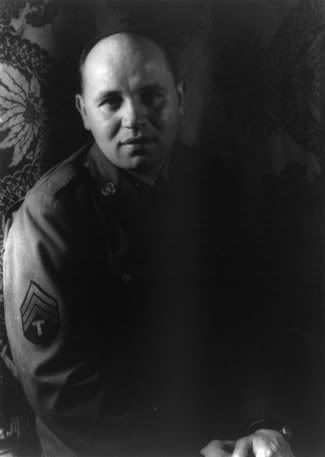
Romare Howard Bearden was born on September 2, 1911, to Richard-Howard and Bessye Bearden in Charlotte, North Carolina. He died in New York City on March 12, 1988, at the age of 76. His life and art reveal an exceptional talent, encompassing a broad range of intellectual and scholarly interests, including music, performing arts, history, literature and world art.
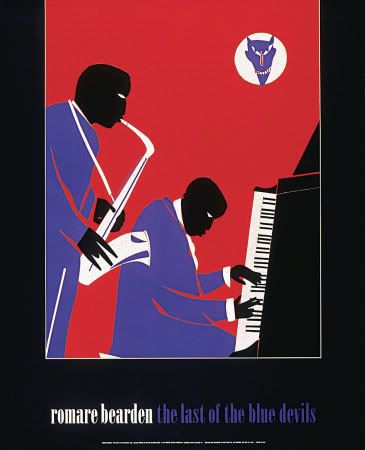
Bearden was also a celebrated humanist, as demonstrated by his lifelong support of young, emerging artists.
Romare Bearden began college at Lincoln University, transferred to Boston University and completed his studies at New York University (NYU), graduating with a degree in education. While at NYU, Bearden took extensive courses in art and was a lead cartoonist and then art editor for the monthly journal The Medley. He had also been art director of Beanpot, the student humor magazine of Boston University. Bearden published many journal covers during his university years and the first of numerous texts he would write on social and artistic issues. He also attended the Art Students League in New York and later, the Sorbonne in Paris. In 1935, Bearden became a weekly editorial cartoonist for the Baltimore Afro-American, which he continued doing until 1937.
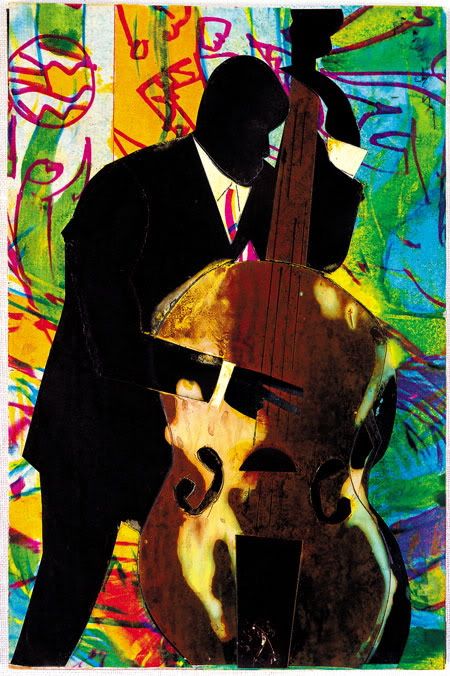
After joining the Harlem Artists Guild, Bearden embarked on his lifelong study of art, gathering inspiration from Western masters ranging from Duccio, Giotto and de Hooch to Cezanne, Picasso and Matisse, as well as from African art (particularly sculpture, masks and textiles), Byzantine mosaics, Japanese prints and Chinese landscape paintings.
From the mid-1930s through 1960s, Bearden was a social worker with the New York City Department of Social Services, working on his art at night and on weekends.
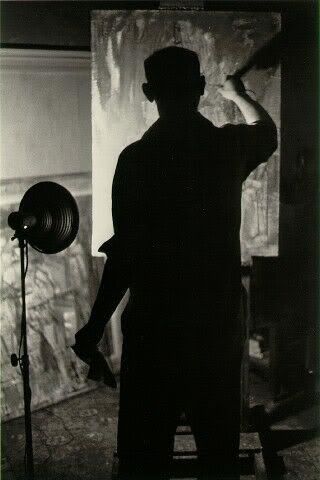
His success as an artist was recognized with his first solo exhibition in Harlem in 1940 and his first solo show in Washington, DC, in 1944. Bearden was a prolific artist whose works were exhibited during his lifetime throughout the United States and Europe. His collages, watercolors, oils, photomontages and prints are imbued with visual metaphors from his past in Mecklenburg County, North Carolina, Pittsburgh and Harlem and from a variety of historical, literary and musical sources. In the process, he would go on to become America’s Greatest Collagist.

In 1954, Bearden married Nanette Rohan, with whom he spent the rest of his life. In the early 1970s, he and Nanette established a second residence on the Caribbean island of St. Martin, his wife's ancestral home, and some of his later work reflected the island's lush landscapes. Among his many friends, Bearden had close associations with such distinguished artists, intellectuals and musicians as James Baldwin, Stuart Davis, Duke Ellington, Langston Hughes, Ralph Ellison, Joan Miró, George Grosz, Alvin Ailey and Jacob Lawrence.
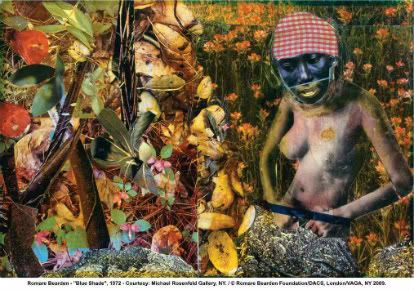
Bearden was also a respected writer and an eloquent spokesman on artistic and social issues of the day. Active in many arts organizations, in 1964 Bearden was appointed the first art director of the newly established Harlem Cultural Council, a prominent African-American advocacy group. He was involved in founding several important art venues, such as The Studio Museum in Harlem and the Cinque Gallery. Initially funded by the Ford Foundation, Bearden and the artists Norman Lewis and Ernest Crichlow established Cinque to support younger minority artists. Bearden was also one of the founding members of the Black Academy of Arts and Letters in 1970 and was elected to the National Institute of Arts and Letters in 1972.

Recognized as one of the most creative and original visual artists of the twentieth century, Romare Bearden had a prolific and distinguished career. He experimented with many different mediums and artistic styles, but is best known for his richly textured collages, two of which appeared on the covers of Fortune and Time magazines, in 1968. An innovative artist with diverse interests, Bearden also designed costumes and sets for the Alvin Ailey American Dance Theater, and programs, sets and designs for Nanette Bearden's Contemporary Dance Theatre.
Among Bearden's numerous publications are: A History of African American Artists: From 1792 to the Present, which was coauthored with Harry Henderson and published posthumously in 1993; The Caribbean Poetry of Derek Walcott and the Art of Romare Bearden (1983); Six Black Masters of American Art, coauthored with Harry Henderson (1972); The Painter's Mind: A Study of the Relations of Structure and Space in Painting, coauthored with Carl Holty (1969); and Li'l Dan, the Drummer Boy: A Civil War Story, a children's book published posthumously in September 2003.
Bearden's work is included in many important public collections including the Metropolitan Museum of Art, the Whitney Museum of American Art, the Philadelphia Museum of Art, the Museum of Fine Arts, Boston and The Studio Museum in Harlem, among others. He has had retrospectives at the Mint Museum of Art (1980), the Detroit Institute of the Arts (1986), as well as numerous posthumous retrospectives, including The Studio Museum in Harlem (1991) and the National Gallery of Art, Washington, DC (2003).
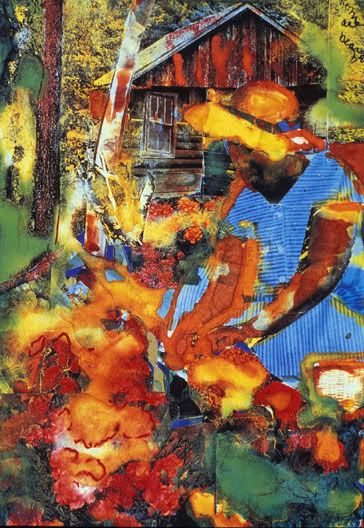
Bearden was the recipient of many awards and honors throughout his lifetime. Honorary doctorates were given by Pratt Institute, Carnegie Mellon University, Davidson College and Atlanta University, to name but a few. He received the Mayor's Award of Honor for Art and Culture in New York City in 1984 and the National Medal of Arts, presented by President Ronald Reagan, in 1987.
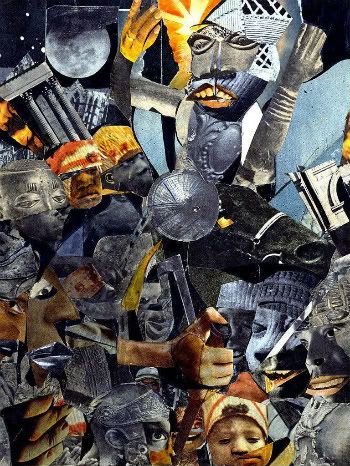
When he passed, it marked not only the end of an era, but the death of one of the last Great Artists whose work primarily focused on the lives, the joy, the pain, the reality and the celebration of African American culture.
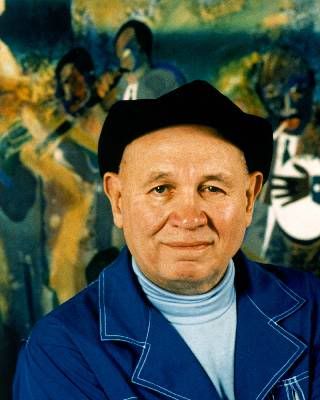
We thank you, Mr. Bearden, for so eloquently helping to tell, illustrate and define our story.
One.

9 comments:
I love Bearden's art. I first learned of him from buying postal stamps with his art work on them.
love the vibe here...good to see another jazz head ;)
Thanks Brotha Pen!
Stunning tribute to one our shining artistic lights.
Thanks for this one, Moaner! I became familiar with his artwork mainly through black history calendars that we'd sell at the bookstore I worked at and through my church.
His work is strange and beautiful.
I've never heard of him but I have seen his work. I appreciate his love for our story. Thanks for the introduction
@ C:
Thanks for rolling by. Yes, I've a longtime love afair w/ Jazz... & most music, actually, as long as it's good.
@ J: Thanks mane. He was definitely a shining light & I wish more people were aware of his gifts.
@Anna May:
Yes. "Strange & Beautiful"... that would be an apt description for Bearden's work... but that would also describe much of Picasso's as well. Both were mainly Abstrast Impressionists w/ a unique way of seeing the world.
@ Daij:
Although I choose Black History as an elective back in high school, Bearden was never taught. He, his work, like much of my knowledge of history came from being curious & somewhat auto-didactic.
One.
Wow, Lin. Thanks so much for this post! I hadn't heard of Bearden before now and I am so happy to hear of him and to be educated on his work!
Brilliant post, Lin!
Interesting, although I'm not quite sure about your comparison to Picasso. Is it because like Picasso, Bearden turned out to be a one man art factory unceasingly producing work for his audience? It couldn't be because they have the same style, because there's stuff there that I actually like by him unlike the over-hyped pieces from Picasso.
@ Val:
Thanks Valentina. If this post opens the eyes of a few, or introduces Bearden to a new audience, then it's worth it.
@ Curious:
The Picasso Comparison: Well, both were Abstract Impressionists whose work helped to document 20th century culture byway of their chosen art forms. Both were rather prolific & produced copious amounts of work in their lifetimes. Picasso helped to define the state of modern art from the 1910s until his death. Bearden did the same, & was a creative force right up until the time he passed. Both became the foremost ambassadors of their own unique creations. Bearden, along with Jacob Lawrence helped to define Fine Art during the Harlem Renaissance.
While Picaso was hailed as a "genuis" & is studied in schools... as is often the case the media, social critics & society at large fail to give equally talented Black people their rightful due.
So, I guess that responsibility falls to us.
One.
Nice post.
Post a Comment